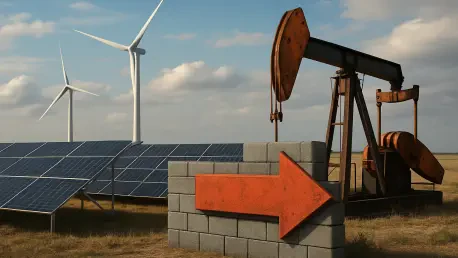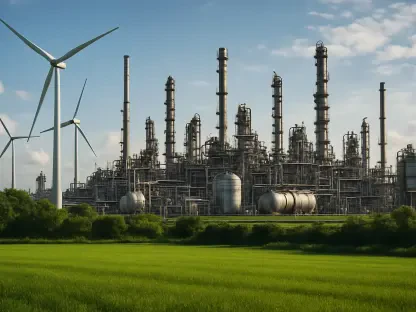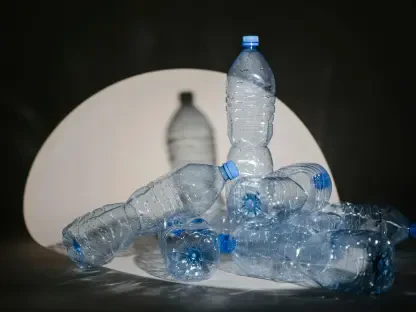As the U.S. grapples with a shifting energy landscape, we’re thrilled to sit down with Christopher Hailstone, a seasoned expert in energy management, renewable energy, and electricity delivery. With his deep knowledge of grid reliability and security, Christopher offers a unique perspective on the ambitious 4-GW renewables joint venture between two European energy developers in the Western U.S. In this conversation, we explore the goals and challenges of this partnership, the impact of current political headwinds on clean energy, strategies for navigating land and interconnection hurdles, and the long-term outlook for renewable energy development in a complex policy environment.
How would you describe the core mission of this new joint venture, and what kind of impact are you aiming to make in the Western U.S.?
The core mission of this partnership is to develop a robust 4-GW portfolio of wind, solar, and energy storage projects across the Western U.S. We’re looking to bolster clean energy capacity in regions with high demand and strong potential, focusing on areas under the Electric Reliability Council of Texas and the Western Electricity Coordinating Council. The impact we’re aiming for is twofold: first, to contribute significantly to the region’s transition to sustainable energy, and second, to demonstrate that large-scale renewable projects can thrive even in a challenging political climate.
What types of projects are you prioritizing in the early stages, and why?
Initially, we’re prioritizing a mix of solar and storage projects. Solar has become increasingly cost-competitive, and pairing it with storage helps address intermittency issues, ensuring a more reliable energy supply. Wind is also on the table, but site-specific factors like land availability and wind patterns will guide where we start. Our focus is on projects that can be developed efficiently and deliver quick returns while we build out the broader portfolio.
What led to the decision to target specific regions like Texas and the Western U.S. for development?
These regions offer a combination of strong renewable resource potential and growing energy demand. Texas, for instance, has a well-established market for renewables and a grid that’s hungry for more capacity. The Western U.S., under the Western Electricity Coordinating Council, has vast open spaces ideal for solar and wind, plus a progressive push for clean energy in many states. Despite federal policy challenges, the local market dynamics and infrastructure in these areas make them prime spots for investment.
Can you walk us through how this partnership came together and what each party contributes to the table?
This collaboration emerged from a shared vision to scale up renewable energy in the U.S. market. Both companies bring complementary strengths—one has deep expertise in project development and execution, particularly in solar and wind, while the other offers strong financial backing and experience in sustainable infrastructure. Together, we’ve created a synergy that allows us to tackle large-scale projects with confidence, from greenfield development to navigating regulatory landscapes.
Given the current administration’s preference for fossil fuels, how are you approaching the uncertainties around renewable energy policy?
We’re taking a long-term view. While the current administration’s policies create headwinds—like restrictions on federal land use and the phasing out of tax credits—we’re planning for projects that won’t come online until closer to the end of the decade. By then, we anticipate a potential shift in policy direction. In the meantime, we’re focusing on adaptability, building cost models that account for reduced incentives, and prioritizing private land to sidestep federal roadblocks.
How are you planning to secure suitable land for development, especially in states with high federal ownership like Nevada?
Securing land in states like Nevada, where federal ownership dominates, is indeed a challenge. Our strategy is to build strong relationships with private landowners and local stakeholders. We’re also exploring partnerships with entities that have access to suitable sites, whether through leasing arrangements or joint development agreements. It’s about being creative and persistent—finding parcels that align with our technical needs while minimizing regulatory friction.
With the U.S. interconnection queue shrinking, how do you see this trend benefiting your projects?
A shrinking interconnection queue is a silver lining for us. As speculative or less viable projects drop out—often due to policy shifts or permitting issues—it clears the way for well-planned greenfield projects like ours to move up in line. This can significantly shorten our timelines for grid connection, which is often a major bottleneck. We’re closely monitoring these trends and positioning ourselves to capitalize on any openings that arise.
What do you foresee as the biggest challenges in getting your projects connected to the grid, even with a less crowded queue?
Even with a shrinking queue, grid connection remains complex. Infrastructure upgrades are often needed to accommodate new capacity, and those can be costly and time-consuming. There’s also the challenge of coordinating with regional grid operators to ensure our projects align with their planning and reliability standards. We’re investing in detailed studies and early engagement with utilities to anticipate and mitigate these issues before they derail our timelines.
Looking ahead, what is your forecast for the renewable energy sector in the U.S. over the next decade?
I’m cautiously optimistic about the next decade. Despite current policy setbacks, the underlying drivers for renewables—cost declines, technological advancements, and public demand for clean energy—aren’t going away. I expect we’ll see continued growth, especially if state-level policies and corporate commitments keep pushing the agenda forward. By the end of the decade, I believe renewables will solidify their place as a cornerstone of the U.S. energy mix, though the pace will depend on how federal policies evolve. We’re preparing to be a key part of that transition, no matter the political landscape.









